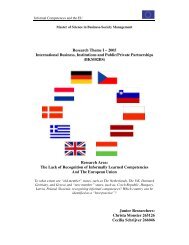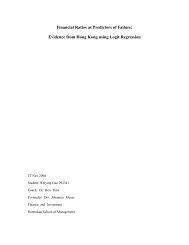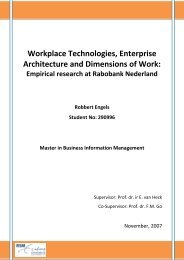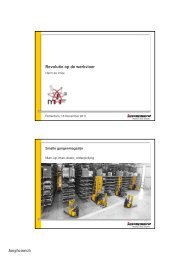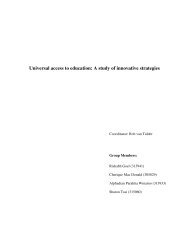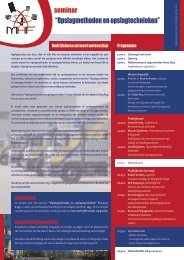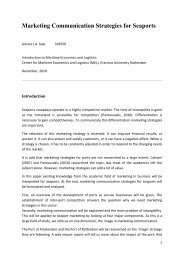here - ERIM - Erasmus Universiteit Rotterdam
here - ERIM - Erasmus Universiteit Rotterdam
here - ERIM - Erasmus Universiteit Rotterdam
You also want an ePaper? Increase the reach of your titles
YUMPU automatically turns print PDFs into web optimized ePapers that Google loves.
A validation Study of House of Quality key performance indicators<br />
Customer Needs (WHAT’S)<br />
As mentioned before, QFD starts with the customer. The first step in creating a House of Quality is to<br />
identity the needs of the customers for the product or service, collect and when necessary organize<br />
these needs, and reveal the relative importance perceived by the customers. Usually when an<br />
organization is using the HOQ, the focus is on the ultimate customers. Also in this research for the<br />
Unie, the focus will be on the ultimate customers who are in this case the members of the online<br />
labour union.<br />
After identifying the target group of customers, the needs of the customers for the product or service<br />
have to be determined. A customer need is a description, in the customer’s own words, of the benfits<br />
that have to be fullfilled by the product or service (Griffin and Hauser 1993).<br />
Kano et al. (1984) developed a model which defines three types of customer needs (Figure - 6). In<br />
this model attributes of a product or service are categorized on how well they are able to satisfy the<br />
needs of the customers. The following categories of customer needs are defined:<br />
- Basic needs, also known as must-be needs; customers become dissatisfied when performance of the<br />
product attribute is low and satisfaction will not rise above neutral even with a high performance of<br />
product or service attribute. These needs reflect to features wich must exist before a potential<br />
customer will consider a product or service. The performance or one-dimensional needs allow a<br />
direct comparisson between competing products and are t<strong>here</strong>fore more quantifiable. Customer<br />
satisfaction is a linear function of the performance of the product attribute; higher attibute<br />
performance will lead to higher customer satisfaction. The third category are the exitement or<br />
attractive needs also called delighters. Inclusion of these features delight the customer, even if they<br />
did not ask for such features. T<strong>here</strong>fore customer satisfaction increases super-linearly when<br />
increasing the product of service attribute performance. Important to notice is that t<strong>here</strong> will be no<br />
decrease in customer satisfaction when t<strong>here</strong> is a decrease in attribute performance. These are the<br />
features that give a feeling of “wow” to the customers and t<strong>here</strong>fore we can conclude that these<br />
features are most suitable for differentiation.<br />
37




